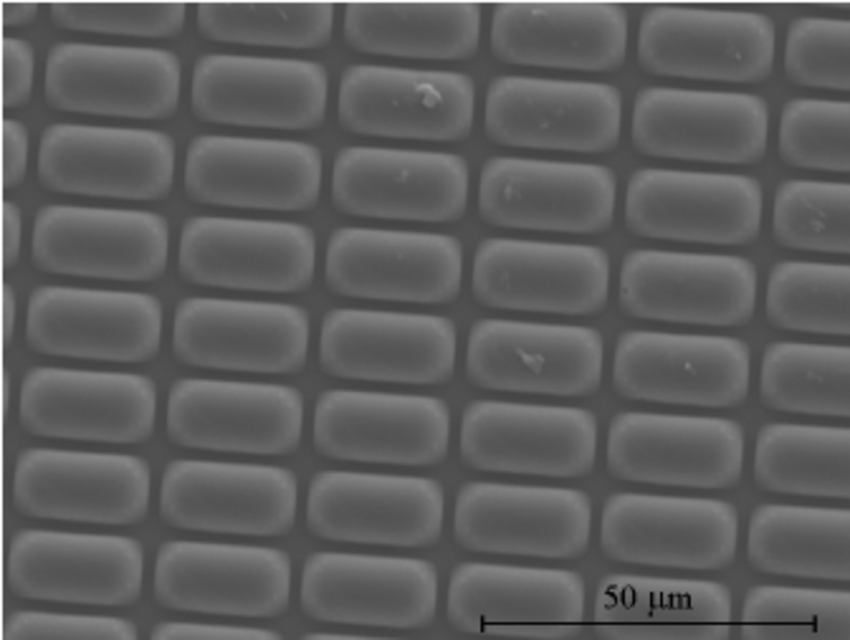SID Stuff
Here’s what a few display brands were showing:
Tianma (000050.CH)
- 7.56” micro-LED display (active area is ~4.6” x 6”) with low-resolution (480x720) 114 ppi LTPS based system for e-books
- 7.56” flexible micro-LED display with the same characteristics as the one above, but for automotive applications
- 10” micro-LED display, which is actually two 5” micro-LED displays ‘spliced together (no visible seam) for automotive applications.
- 8.03” foldable high resolution OLED display with 403 ppi with ultra-thin glass cover. What makes this unusual is that the pixel configuration is YYG (yellow-yellow-green), similar to what LG Display (LPL) uses for its OLED TVs. This would imply a color filter, and unusual set-up for a smartphone display. This display was also shown as a rollable display.
- 6.2” OLED panel with micro-lens, which are small structures etched into the display to capture and refocus light from each pixel. (Fig. 1)
- 6.39” OLED display with FOD (fingerprint on display)
- 6.39” OLED display with ‘virtual buttons’, essential touch systems built into the edges of the screen, acting as volume controls or similar functions
- A series of different size wearable (1.2” to 1.6”) OLED displays
- A series of 6.67” and 15.6” OLED displays with variable refresh rate systems
Without going through the entire litany of BOE promo videos and showcased products, there was one that caught our attention, despite it being hidden away among a wide variety of LCD, QLED, and mini-LED displays. This was a 55” AMQLED (Active Matrix Quantum Dot LED), that BOE had sort of announced at the end of last year. From what we know, this is the first large panel display to use quantum dots as self-emissive light sources, not as color converters and represents the ultimate goal for quantum dot display development. In this display quantum dots are electrically stimulated in the same way as OLED materials would be, and produce red, green, and blue light from individually controllable QD sub-pixels.
As quantum dots can be produced with narrow emission characteristics, that is, very precise color, this form of display should provide improved color characteristics over all other display types. We say should because little information has been seen about this display, other than some very basic specs, although we believe the quantum dot emitting layers are printed, which should lead to a low-cost process, again, in theory, which would not face the high volume transfer issues that face micro-LED development.
That said, there are many hurdles that such a display must jump to bring this technology to mass production, and while we know others are pursuing similar goals with QDs, BOE seems to be the first to show what looks to be a potential commercial product, albeit still a ways away from commercial production. Of course, such a product would have to be sampled and tested by potential customers (TV brands), at which point BOE would have to move production from what is likely an R&D or pilot line, to a mass production line if accepted, so we are not expecting anything soon, but we certainly give BOE points for bringing the technology out, at least in print.
While many different displays were highlighted on virtual site, there was no indication as to whether they were active production products or just potential offerings. We understand that many companies don’t post availability information publicly, but without production status, it is hard to know whether they are lab versions, under production development, in ‘sample’ mode, or in mass production. We miss the days when you could actually ask questions of booth staff, who were sometimes excited enough about the product to give you timelines and similar information. If we posed as potential buyers now, we might be able to get some detail, but that would happen only once and then we would lose the ability to ask even simple questions. Looking forward to the day when we can return to live exhibitions…

 RSS Feed
RSS Feed